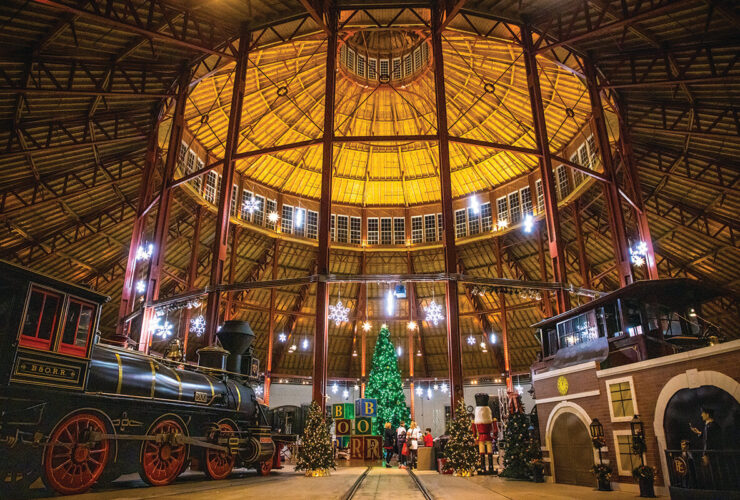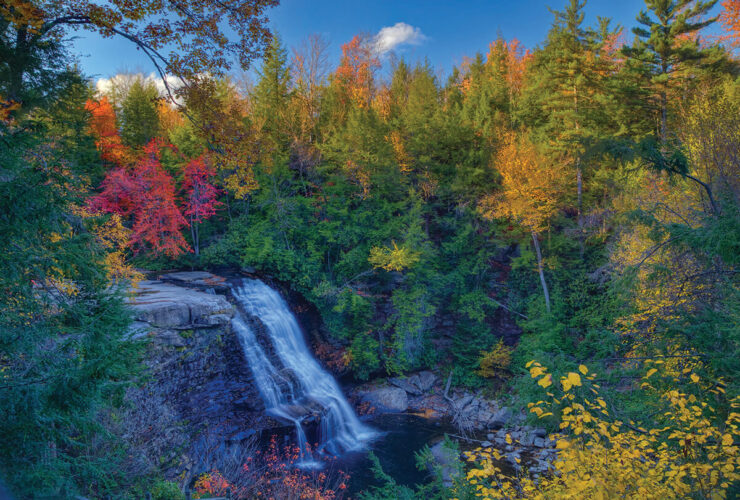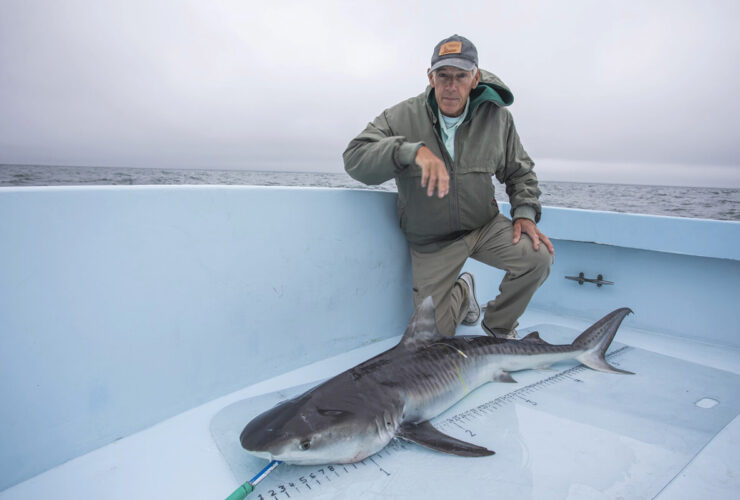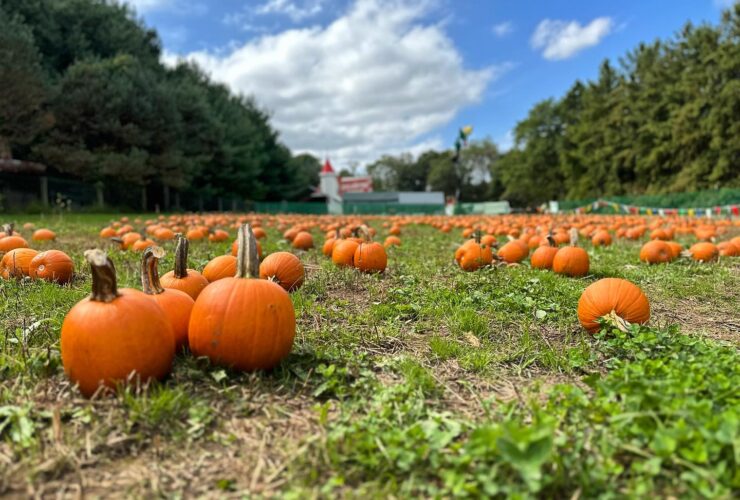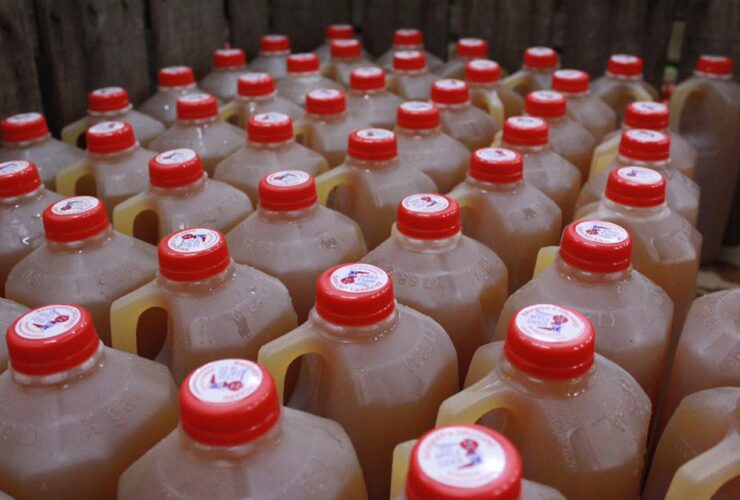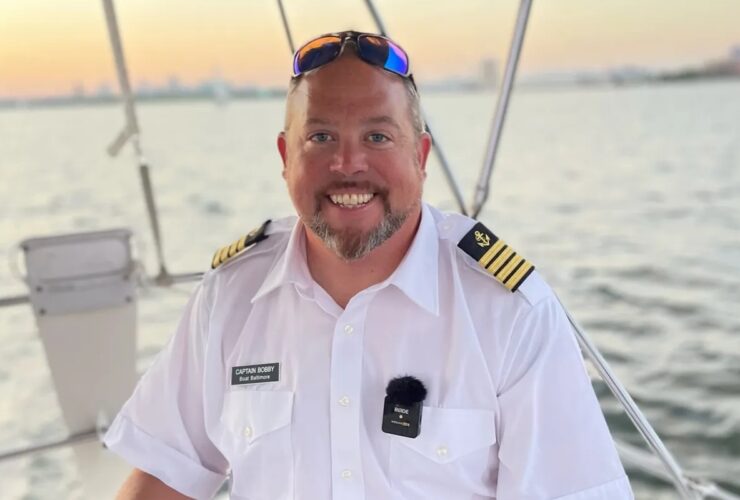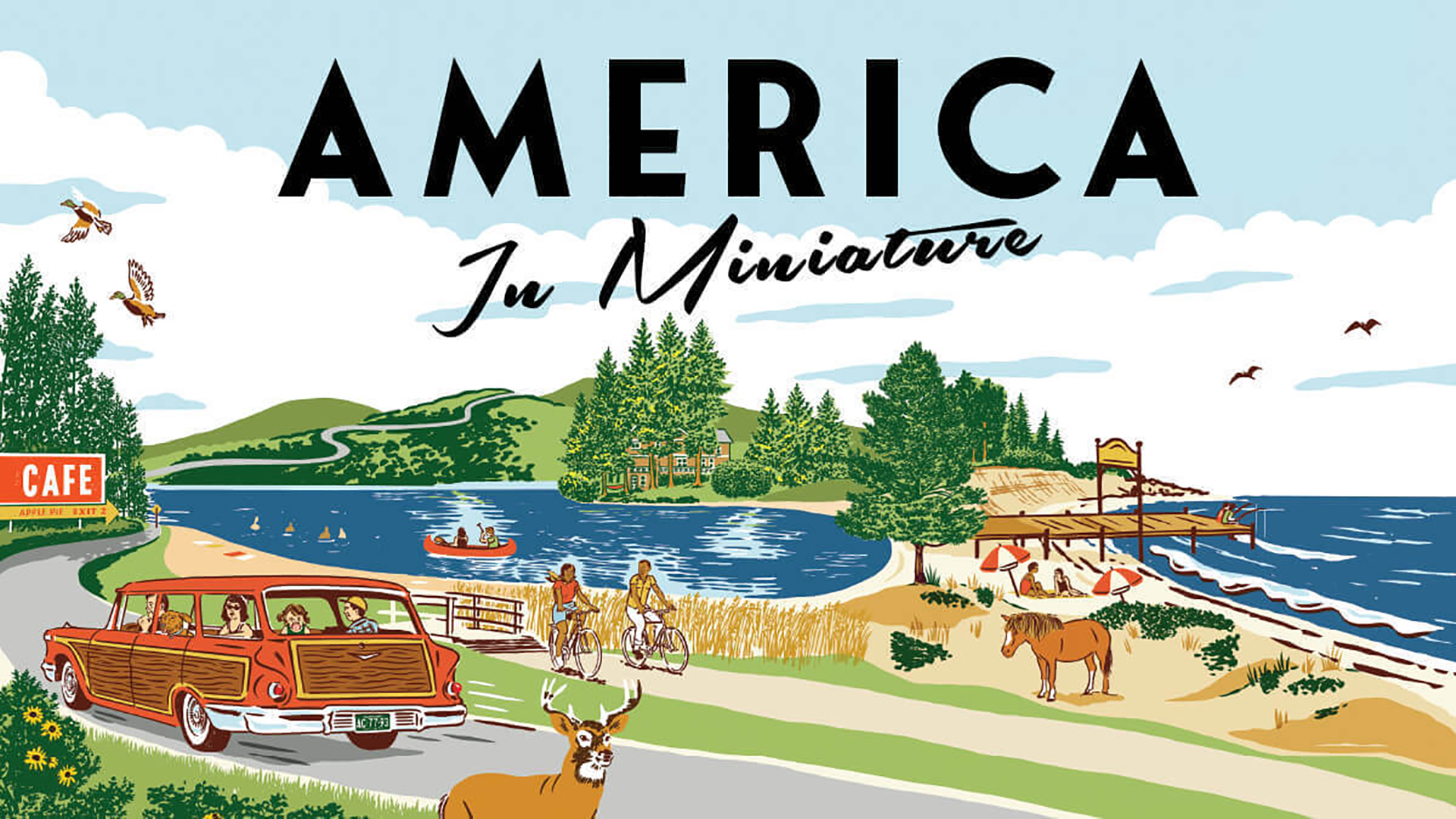
Travel & Outdoors
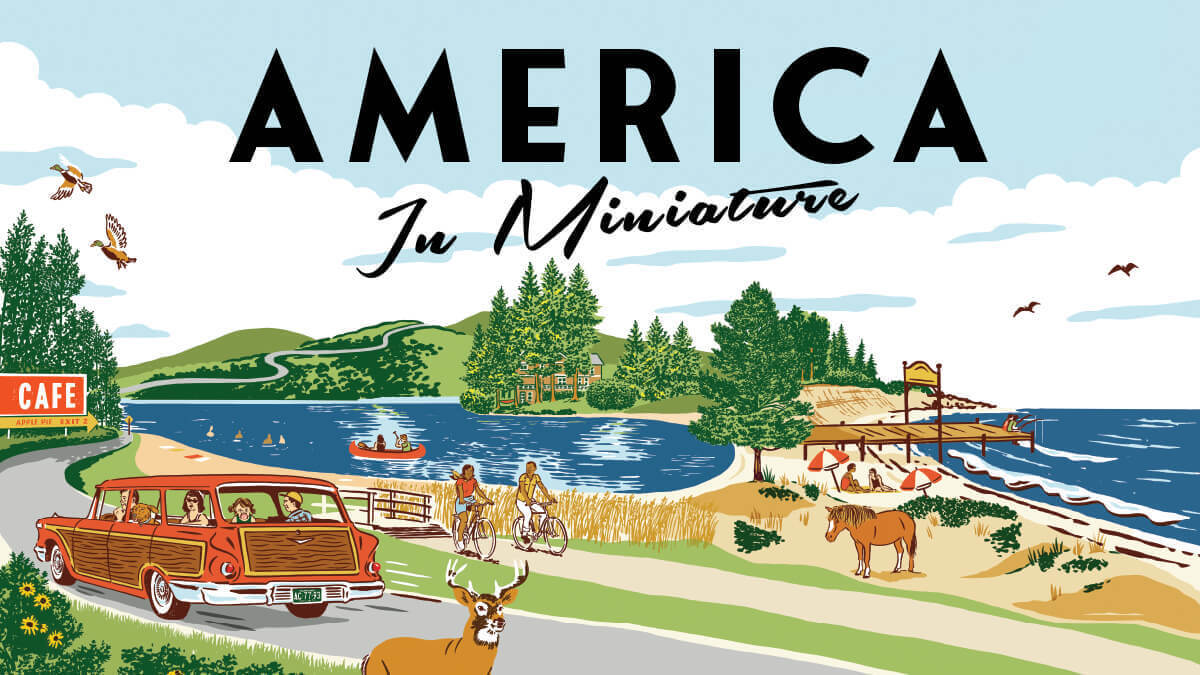
From the sands of Worcester to the mountains of Garrett, the retro Maryland slogan remains truer than ever!
At Maryland’s narrowest point, it’s less than a two-mile walk from the West Virginia border through the small town of Hancock to the Pennsylvania border. Wedged between the Mason-Dixon line to the North and the Potomac River to the South, it is said to be the smallest straight-shot state border-to-border distance in the country. With 1,500 residents tucked in just 2.75 square miles, Hancock has always offered plenty of reasons to visit. The Chesapeake & Ohio Canal towpath—the well trafficked 184.5-mile national park—cuts through the town. The verdant 28-mile Western Maryland Rail Trail also runs between Hancock and nearby Fort Frederick, which held British and German prisoners during the American Revolutionary War and held off Confederate raiders on Christmas Day 1861. And Hancock’s Woodmont Lodge—situated now on a natural resource area open to hikers, mountain bikers, birders, and equestrians—once served as a favorite hunting destination for presidents.
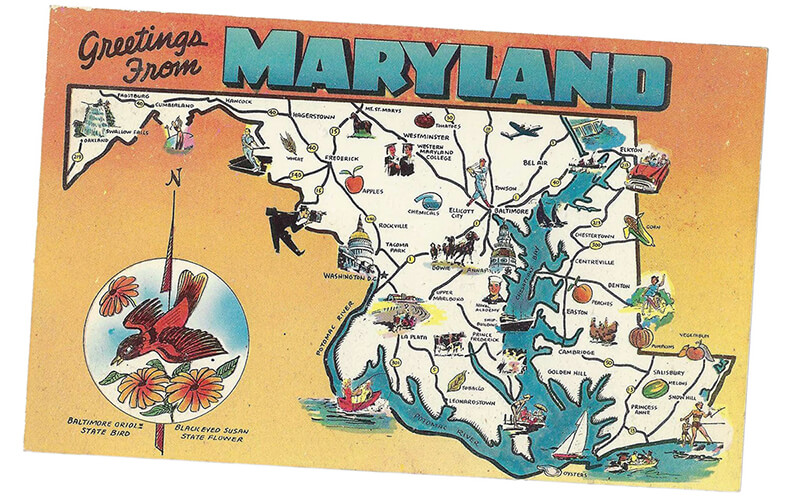
A vintage Maryland travel postcard
As far as notable residents, General Douglas MacArthur’s chief of staff during World War II, Richard Sutherland, hailed from Hancock. So did former Congressman Charles Rowland and former big-leaguer Ike Powers.
More local history: William Dorsey Swann, who endured childhood slavery and became a gay liberation activist and America’s first self-described drag queen was born here. (A surely not-to-be-missed biography, House of Swann: Where Slaves Became Queens, is in the works.) Today, Hancock is home to a popular bicycle shop/bunk house for C&O Canal bike campers and the Blue Goose Fruit Market & Bakery, one of the most remarkable gourmet pie makers in the state.
Hancock is to Maryland as Maryland is to America—chock full of history, outdoor adventure, and a little bit of everything in between—in other words, the kind of stuff day trips and weekend getaways are made of.
W e all know Maryland is not a large state. With roughly 12,400 square miles, nearly a quarter of which is water, we check in at number 42 out of the 50 states in terms of size. Fittingly, it was the first fulltime editor of National Geographic, Gilbert Grosvenor, who dubbed Maryland “America in Miniature.” Grosvenor, naturally, was touting our varied topography. From the sandy shores of Ocean City and Assateague Island and the marshes of the country’s largest estuary, the Chesapeake Bay, to the farms of Frederick County and the Allegheny Mountains, nearly every kind of terrain can be found in Maryland.
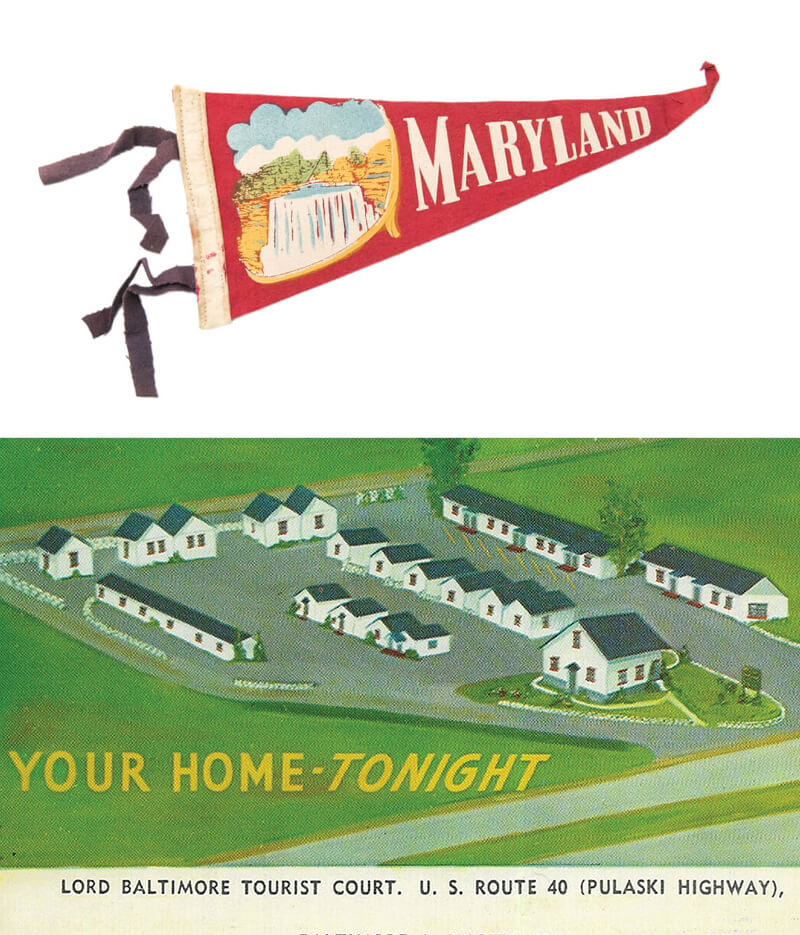
A throwback state pennant. A motel postcard from U.S. Route 40. Courtesy of Maryland Pennant. Photography by Kristoffer Tripplaar Photography
In between, you’ll find the sunflower fields, rolling hills, and horse country of northern Baltimore County; the incredibly diverse neighborhoods, museums, and history of our great port City—and more quirky fun stuff in the Greater Washington suburbs than you might expect.
The legendary Grosvenor, a key supporter of the effort to create a National Park Service, may have been the first to coin Maryland “America in Miniature,” but it was former reporter, public relations professional, and civic activist Paul Welsh who gets credit for turning the phrase into a state slogan in 1939.
By the summer of the 1940, the Maryland Publicity Commission was authorizing the production of 20,000 tourism booklets—complete with illustrations and road maps—with the new nickname in hopes of drumming up interest in the state’s vacation attractions. Later that year, the same commission issued a series of 25 stamps with the slogan, along with more illustrations of Maryland’s natural beauty, history, and sporting opportunities.
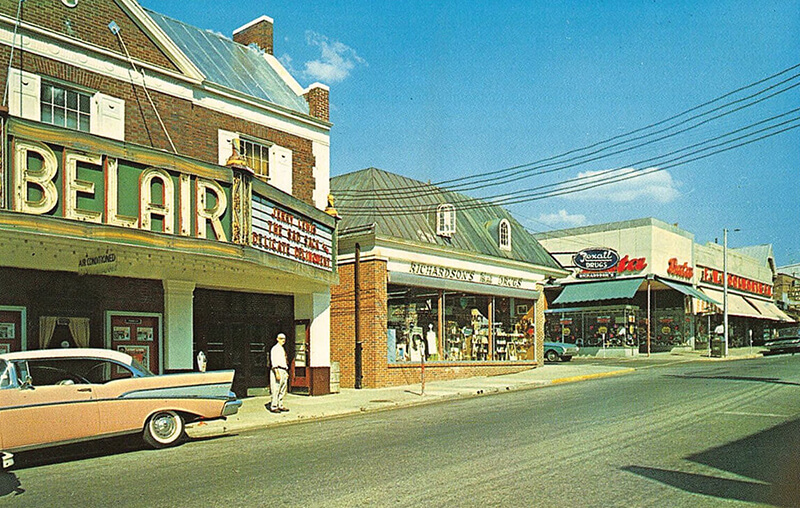
Main Street, Belair vintage postcard.
The following February, state officials took thousands of America in Miniature-themed pamphlets and built an exhibition around the theme at the annual National Sportsman’s Show in New York City, further cementing Maryland’s new nickname. Naysayers might have noted the state doesn’t have freshwater lakes (they’re all man-made), snow-capped peaks, or Spanish moss. But the professional New York model hired by the Maryland Publicity Commission to host their booth told a reporter she was so impressed by the glories of the state that she intended to spend her summer vacation in Maryland.
At one point in 1965, two Washington businessmen pitched the idea of building a $20,000,000 America in Miniature theme park—literally 2,500 replicas of U.S. and Maryland landmarks—on a 100-acre site off I-70 in Gaithersburg.
That it was the peripatetic Welsh who proved the key player in the making of the Maryland slogan remains fitting. His life’s story spans the entire state. Born in Cumberland, he grew up in Baltimore, attended the University of Maryland, and then the University of Maryland School of Law. He worked at various times for institutions such as The Baltimore Sun, the Orioles, and McCormick & Co. Active in a wide range of community affairs, he served as president of the Wine and Food Society of Baltimore and chaired a committee for the preservation of Babe Ruth’s birthplace. He enjoyed debating about where one could get the best oysters in the city, and his Maryland clam chowder recipe won a 1967 contest and was subsequently included in the New York Times Heritage Cookbook.
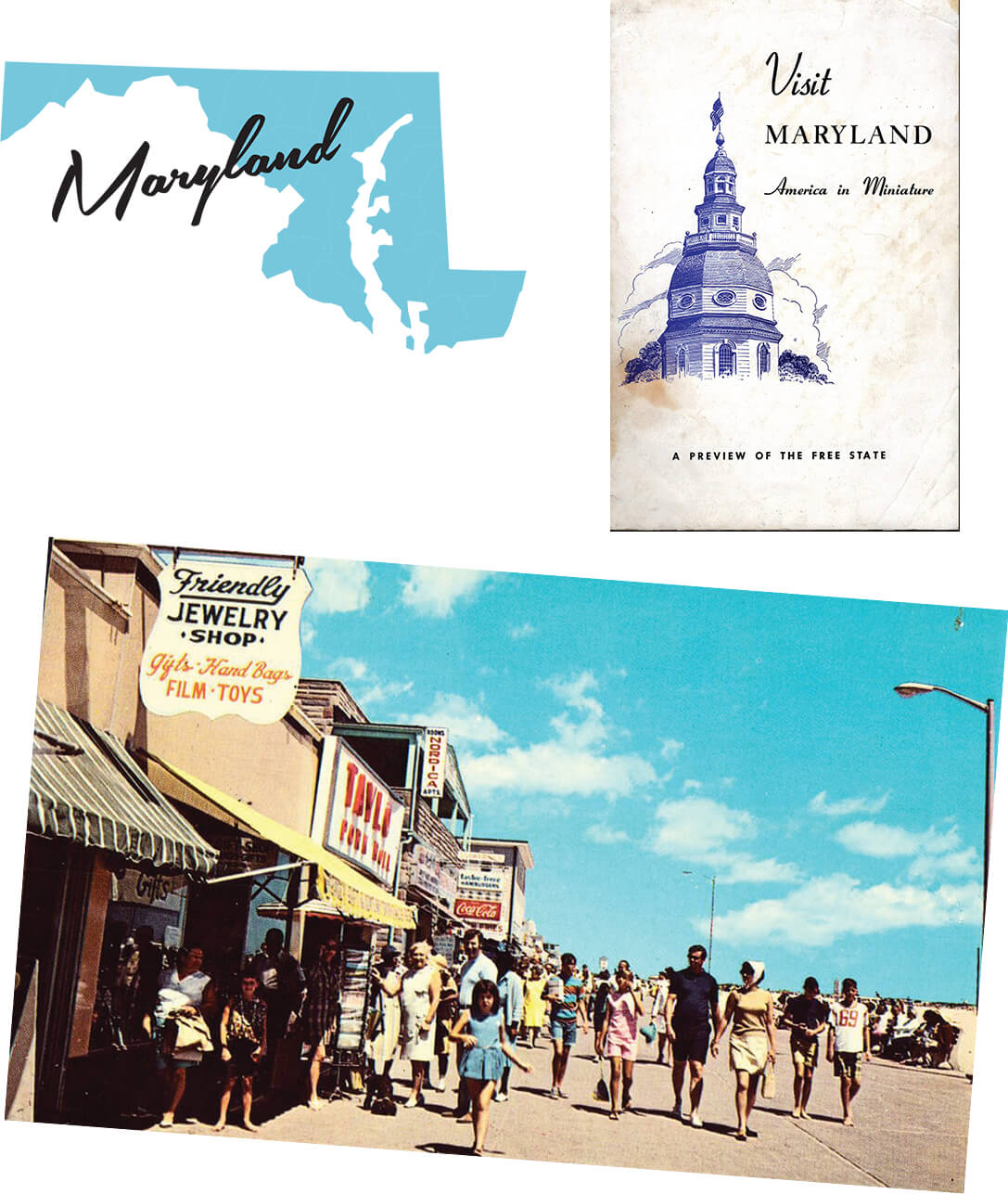
A 1949 copy of the state's “America in Miniature” booklet; retro Ocean City boardwalk postcard.
In 2017, the Maryland Chapter of the Public Relations Society of America named its annual award after Welsh, who passed away in 1991. A coincidence perhaps, the America in Miniature catchphrase receded from public usage shortly thereafter. When Robert Ehrlich and Martin O’Malley served in Annapolis, Maryland road signs read, “Enjoy Your Visit.” In 2015, Gov. Larry Hogan replaced those with the even less poetic, “We’re Open for Business.”
That said, the lost slogan remains as true as ever, and Marylanders’ pride in their state’s rich beauty remains intact, as our ongoing obsession with the state flag demonstrates.
There’s another cultural phenomenon that outsiders don’t understand but binds Marylanders together, and that’s the Maryland accent, of course. Paradoxically, it’s an expression of both our diversity and proximity to one another. It is different on the Eastern Shore than in Baltimore, and different still in Carroll County. Yet, no matter where a Marylander may travel in the state, they always know a newcomer or tourist from a native—even in Hancock, where different states knock at their front and back doors.
“We can tell right off what state people live in around here,” a Hancock woman named Virginia Stanley told an out-of-state, big-city newspaper years ago. “By their accents. People living in Hancock have a Maryland accent.” Pennsylvanians have a Pennsylvania accent, she noted. “The West Virginians have their own peculiar way of speaking.”
Below, we highlight more than 75 places to visit in Maryland. Some are destinations worth a weekend, while some may merit a week, and others are the kind of unique roadside attractions that are the stuff of spontaneous daytrips. Enjoy the return of travel this summer.

With its deep and historical roots, Maryland’s eastern shore retains a rural charm and pristine beauty unlike almost any other place in the country.
ASSATEAGUE ISLAND
NATIONAL SEASHORE
One of the last big Mid-Atlantic barrier islands largely untouched by development, Assateague Island is a truly unique escape. Ironically, when a brutal Ash Wednesday storm in 1962 destroyed a real estate project, it provided an “unexpected opportunity,” as the National Park Service puts it, for the Department of the Interior to acquire the remaining unprotected portion of Assateague. They set it aside as a national seashore. Today, it’s best known for its wild horses, pristine beaches, and 142-foot-tall lighthouse on its southern end near the coast of Virginia’s Eastern Shore. Large populations of birds inhabit the 37-mile island, including the American oystercatcher, great blue heron, and snowy egret, plus seagulls and brown pelicans.
About the horses. According to the NPS, Assateague’s “wild” horses are, in truth, feral horses— meaning they descended from domestic horses and have reverted to an undomesticated state. Local folklore has it, the NPS explains, that the original horses were survivors of a shipwreck off the coast of Virginia. More likely, but not quite as good of a yarn, the horses were brought to the island by late 17th-century mainlanders.
Go for: the camping and swimming.
Don’t miss: the nearly century- old annual “Pony Swim” from Assateague Island to Chincoteague Island each July.
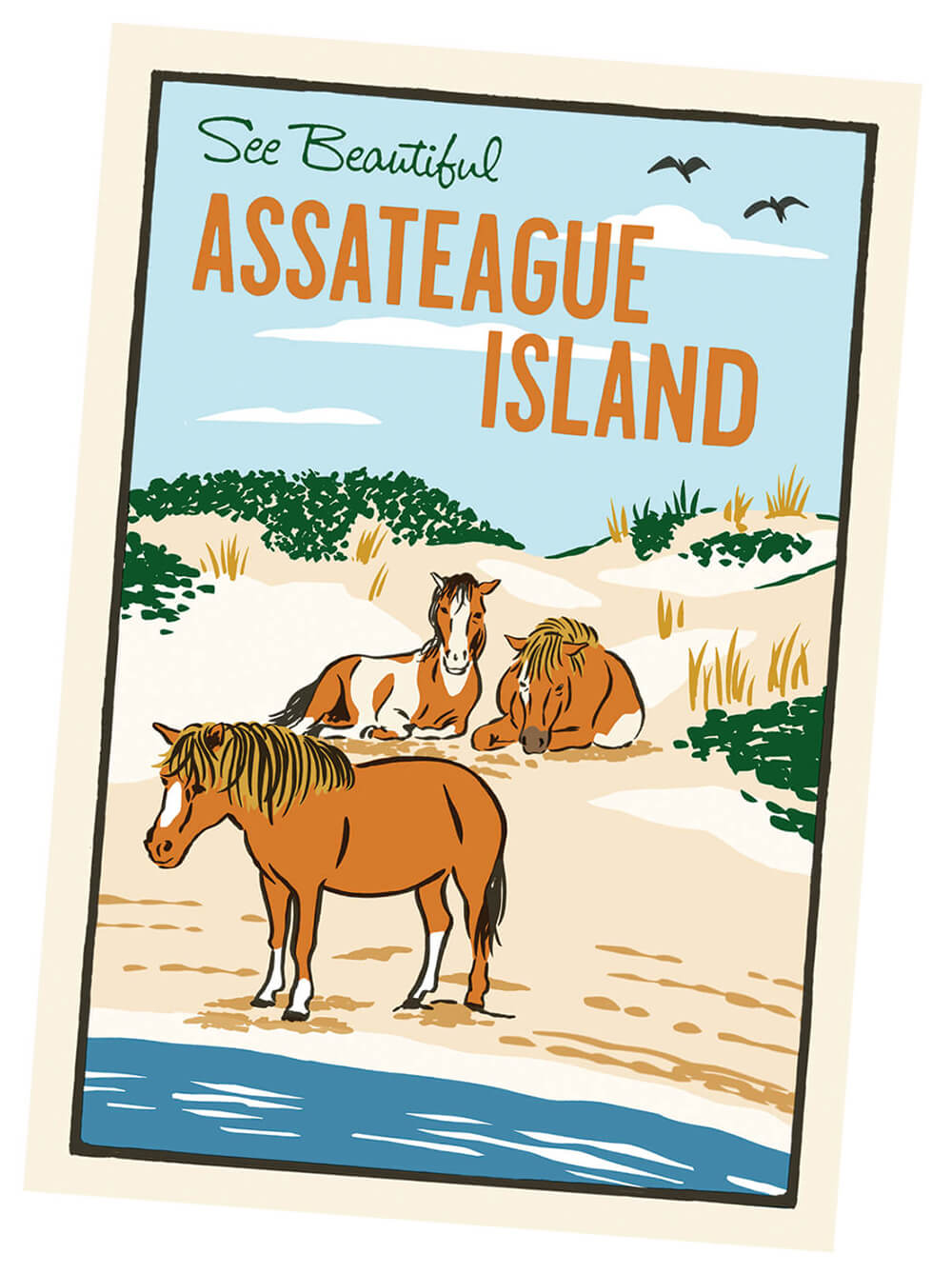
BLACKWATER NATIONAL WILDLIFE REFUGE
Established as a sanctuary in 1933 for waterfowl along the critical Atlantic Flyway migration route, Blackwater National Wildlife Refuge has been called one of the “Last Great Places” by The Nature Conservancy. The Dorchester County treasure consists of more than 30,000 acres of brackish tidal marshes, open fields, and mixed evergreen and deciduous forest. The visitor-friendly refuge is also home to one of the largest breeding populations of American bald eagles on the East Coast, this side of Florida. In June, ospreys hatch—by September, they will begin migrating to Central and South America— and eaglets learn how to fly and forage. In July, local goslings take to the air, and by August, the numbers of wading birds increase.
Notable: The refuge is fed by the 25.8-mile saltwater Blackwater River and Little Blackwater River tributary. The name “blackwater” derives from the slow-moving, tea-colored channels, which become darkened as the water drains through marshy peat soil.
Go for: the birding and bicycling.
Don’t miss: the 25-mile, multipurpose path around the refuge, where there’s a good chance of spotting great blue herons.

LOCAL TREASURES
Chesapeake Bay Balloon Festival
Bridge Branch Rd., Cordova
The biggest hot air balloon festival in Maryland, the Chesapeake Bay Balloon Festival is held every summer at Triple Creek Winery in Talbot County. The three-day event, held over the last weekend in July, features more than a dozen hot air balloons, live music, and crafts, art, and food vendors—and shade tents. HOT AIR BALLOON: CSA IMAGES
OCEAN CITY
Each summer, Maryland’s quintessential Atlantic resort—population 7,000—expands into the second largest city in the state, teeming with some 325,000 vacationers on the weekends. Roughly two-thirds of the annual eight-million visitors are from out of state, arriving from Pennsylvania, Virginia, and Washington, D.C., for the beach, boardwalk, amusement parks, deep-sea fishing, 17 area golf courses, and, now, a casino. For the adventurous, Ocean City offers everything from surfing lessons to skateboarding— the Ocean Bowl Skate Park has attracted the national Dew Tour several times—to the world’s largest billfish tournament, the White Marlin Open.
Back story: With the construction of the Wicomico & Pocomoke Railroad in the late 1860s, investors began laying out the streets, with the town officially named Ocean City in 1875 when the first major hotel opened.
Go for: water sports, seafood, and boardwalk fries.
Don’t miss: the Ocean City Life-Saving Station Museum. Housed in an 1891-built former U.S. Coast Guard building, it captures Maryland’s seaside history like none other.
SMITH ISLAND
For centuries, Marylanders on the Eastern Shore have battled erosion and rising sea levels caused by the slow subsidence of the land along the Chesapeake Bay. But with climate change driving more powerful storms and melting glaciers, the issue has taken on an existential threat for Smith Islanders. The population, which once peaked at 800, is below 200 today, and the island is projected to erode completely by 2100. Which is to say, don’t miss the opportunity to visit this genuine throwback to a slower time and place. The last of Maryland’s inhabited bay islands is not accessible by car, and it’s a 45-minute passenger ferry from Crisfield. The main modes of transportation on the island are golf carts, bicycles, boats, and walking.
What’s in a name? British explorer John Smith mapped this island, but it takes its name from Henry Smith, of Jamestown, Virginia, who was granted 1,000 acres of the island in 1679.
Go for: Smith Island Cake and soft crab sandwiches from Drum Point Market.
Don’t miss: The Martin National Wildlife Refuge on the northern half of Smith Island.


ACADEMY ART MUSEUM
106 South St., Easton
Founded in 1958, the permanent collection includes works on paper by the likes of Goya, Cezanne, Chagall, Picasso, Diebenkorn, Motherwell, and Rauschenberg.
ANNIE OAKLEY HOUSE
28 Bellevue Ave., Cambridge
This private home was built in 1913 for the famed sharpshooter of Buffalo Bill’s Wild West show after Oakley and her husband retired. The bungalow is notable for its roof, which was designed so she could step out from the upstairs windows to shoot game off the Choptank River.
BEN CARDIN C&D CANAL TRAIL
Lock & Bank Streets, Chesapeake City
This 17-mile, multipurpose path stretches to Delaware City on the shores of the Delaware River.
OLD TRINITY CHURCH
1716 Taylors Island Rd., Woolford
Built around 1675, the historic red brick church is one of the oldest church buildings in continuous use in the U.S.
HARRIET TUBMAN UNDERGROUND RAILROAD NATIONAL HISTORICAL PARK
4068 Golden Hill Rd., Church Creek
Walk the landscape that helped shape the Maryland freedom fighter’s life and tour the 16,000-square-foot Harriet Tubman Underground Railroad Visitor Center, which houses a museum dedicated to her life.
OXFORD-BELLEVUE FERRY
27456 Oxford Rd., Oxford
In 1683, Talbot County authorized the historic ferry operations, said to be the oldest privately owned ferry service still in operation in the U.S.

THE MERMAID MUSEUM
4 Jefferson St., Berlin
The new museum hosts a curated collection of mermaid art, myths, and “artifacts,” including scales, hair, nails, and a timeline of mermaid sightings dating back to the 1800s. MERMAID: CSA IMAGES
FREDERICK DOUGLASS STATUE, TALBOT COUNTY COURTHOUSE
11 N. Washington St., Easton
The abolitionist’s acclaimed autobiography begins: “I was born in Tuckahoe, near Hillsborough, and about twelve miles from Easton, in Talbot County, Maryland.”
TRANSPENINSULAR MIDPOINT MARKER
Maryland Route 54, Delmar
Both Lord Baltimore and William Penn believed parts of today’s Delmarva Peninsula was bequeathed to them. This marker connotes the southernmost point of the Maryland, Pennsylvania, and Delaware border that Mason and Dixon surveyed to settle the dispute.
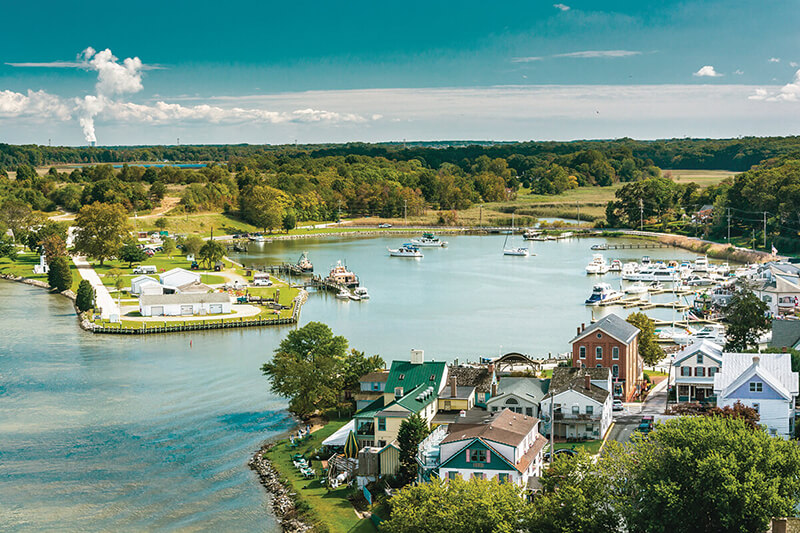
TURKEY POINT LIGHTHOUSE
Elk Neck State Park, North East
The 35-foot tower, first lit in 1833, stands atop 100- foot bluffs, and is known for the large number of women who once served as lightkeepers. Fannie Salter was the last woman lightkeeper in the U.S. when automation forced her into retirement in 1947. Chesapeake City photo (left) courtesy of Jon Bilous/Shutterstock

The national capital counties aren’t just suburbs. They offer an endless array of art, history, and recreation destinations—and quirky attractions.
C&O CANAL TOWPATH
Sometimes referred to as the “Grand Old Ditch,” the C&O Canal began as a transportation route for products from the West. The first stone was laid in Washington, D.C., on July 4, 1828, the same day as the launch of the B&O Railroad in Baltimore. The 184.5-mile canal reached Cumberland in 1850. For a long time, the canal carried Western Maryland and West Virginia coal, as well as limestone, wood, lumber, agricultural products, and flour. In operation for nearly a century, the C&O Canal was a lifeline for Potomac River towns and communities. Today, the crushed stone towpath situated between the canal and river endures as a recreational path for discovering Maryland’s historical and natural treasures from Montgomery County to Frederick, Washington, and Allegany counties. In 1954, Supreme Court Justice William O. Douglas organized an eight-day hike up the towpath to help save the canal from being converted to an automobile parkway. In 1971, the canal became a National Historic Park.
Go long: The canal’s towpath connects directly with the Great Allegheny Passage Trail in Cumberland, creating a continuous 334.5-mile trail from the Nation’s Capital to Pittsburgh.
Go for: bicycling, kayaking, and camping.
Don’t miss: the 4.7-mile Billy Goat Trail between the canal and Potomac River in Montgomery County.
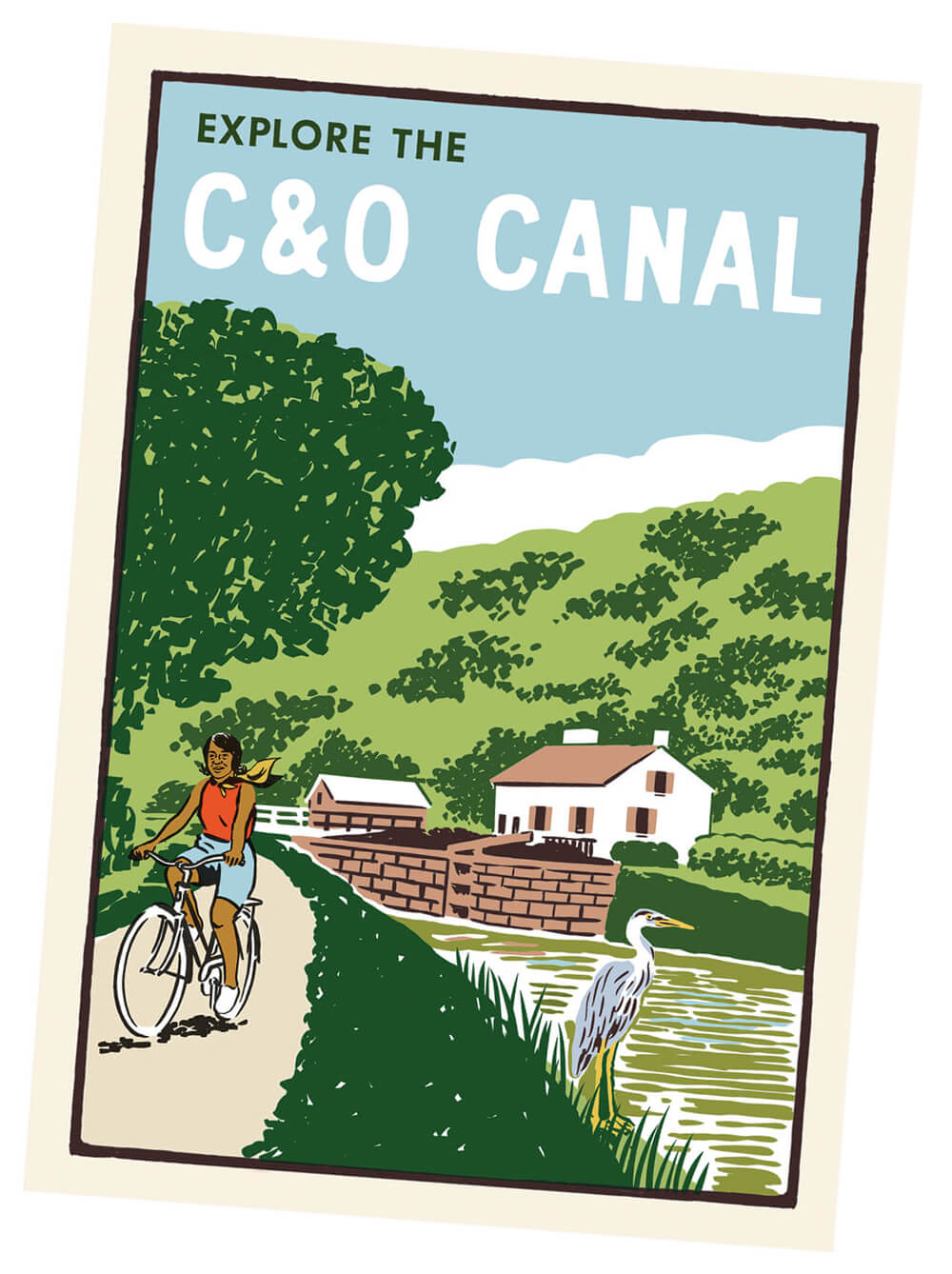
CUNNINGHAM FALLS STATE PARK
Nestled on picturesque Catoctin Mountain in Frederick County, Cunningham Falls State Park is home to a 78-foot cascading waterfall, the largest in the state, and a manmade lake spanning more than 40 acres. Prior to the arrival of Europeans, Native Americans used the Catoctin Mountain area for hunting and fishing, as well as mining it for rhyolite, a volcanic rock, to make sharp projectile points. The state park is divided into two separate and unique areas. The William Houck Area includes the falls, the lake area, the most popular hiking trails, and a camping area. You can also swim at the lake’s beach and rent boats at the dock during the summer months. The highlight of the Manor Area is the historic Catoctin Iron Furnace, constructed in 1774 by four local brothers.
Wide ranging: Catoctin Mountain forms the easternmost ridge of the Blue Ridge Mountains, which themselves are part of the Appalachian range.
Go for: hiking, swimming, and camping.
Don’t miss: Chubby’s Barbeque in nearby Emmitsburg, one of the great roadside BBQ restaurants anywhere.

LOCAL TREASURES
Glen Echo Park
MacArthur Blvd., Glen Echo
For decades, Glen Echo, a half-dozen miles northwest of Georgetown, was a popular amusement park. Part of the National Park Service since 1971, today it’s known for its Art Deco architecture, historic Spanish ballroom, and antique carousel and serves as a visual and performing arts center that oversees art, music, dance, and theater programs.
GREENBELT HISTORIC DISTRICT
Once hailed as a utopian alternative to the increasingly overcrowded American cities of the 1930s, the Prince George’s suburb was one of three planned communities designed by FDR’s federal government during the Great Depression. Today, 86 years after its construction began, the historic Greenbelt district maintains its small town vibe with its cozy parks, family playgrounds, schools, old-timey movie theater, cooperative grocery store, and the cooperatively owned New Deal Café, one of the best local live music venues for the past two decades.
Test of time: The Greenbelt Historic District is the best preserved of the three Depression-era built “greenbelt” towns—Greenhills, Ohio, and Greendale, Wisconsin, are the other two—holding onto much of its green space despite the subsequent real estate and highway developments. It was designated a National Historic Landmark in 1997.
Go for: walking, historical architecture and cultural artifacts.
Don’t miss: the original Art Deco-style Roosevelt Center, which remains the hub of the historic area.
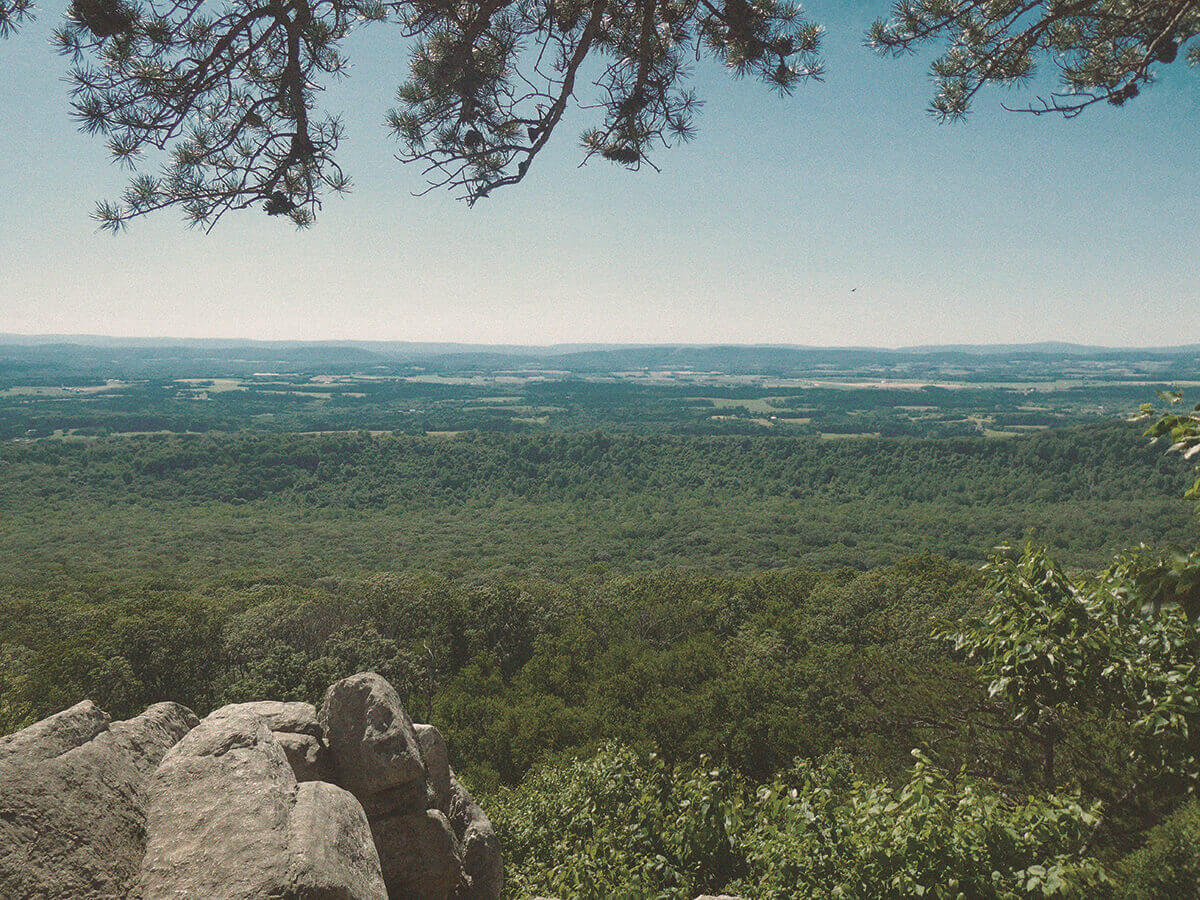
SUGARLOAF MOUNTAIN
The peak of this low mountain in northern Montgomery County is just 800 feet, but it’s considerably higher than the surrounding farmland, and Union and Confederate troops took turns posting lookouts here. This is what Christoph von Graffenried, the Swiss 1st Baron of Bernberg, wrote after visiting the mountain in 1712: “From there we went further back upon a mountain of the highest in those parts, called Sugar Loaf, for it has the form of a loaf of sugar. We took with us Martin Chartier, a surveyor we also had with us, and there came with us several Indians. From the mountain we viewed an exceedingly broad extent of country, a part of Virginia, Maryland, Pennsylvania, and Carolina, used the compass, [and] made us a map.”
Food and supplies: The Dickerson Market in nearby Dickerson is the closest general store for breakfast and lunch.
Go for: hiking, birding, and wildlife.
Don’t miss: historic Strong Mansion and formal gardens.


F.SCOTT AND ZELDA FITZGERALD’S GRAVESITE
520 Veirs Mills Rd., Rockville
This is the somewhat obscure second grave of the acclaimed writer (1896-1940, Fitzgerald died in his lover’s apartment) and wife Zelda (1900-1948, she died in a fire). In 1975, the Baltimore Catholic Diocese finally allowed the remains to be reinterred from a nearby cemetery. Chiseled into Fitzgerald’s tombstone is the last sentence of The Great Gatsby: “So we beat on, boats against the current, borne back ceaselessly into the past.”
NATIONAL SHRINE GROTTO OF OUR LADY OF LOURDES
16330 Grotto Rd., Emmitsburg
The oldest known replica of the famous French shrine in the U.S., including devotional gardens, is located at Mount St. Mary’s University.
HAND & OWL TREE CARVING
Northeast branch of Anacostia Tributary Trail, College Park
Part of a natural arts program on the Prince George’s County trail network, the massive, surrealist wood carving was created by local artist Joe Stebbing and his chainsaw.
JIM HENSON STATUE AND MEMORIAL GARDEN, ARBORETUM AND BOTANICAL GARDEN
University of Maryland, College Park
This 450-pound bronze statue features Kermit the Frog perched on a red granite bench with Muppets creator and Maryland alum Jim Henson.
LAUREL DINOSAUR PARK
13100 Mid-Atlantic Blvd., Laurel
In 1858, African Americans toiling in open-pit iron mines were the first to discover dinosaur fossils in Maryland.
NATIONAL MUSEUM OF CIVIL WAR MEDICINE
48 E. Patrick St., Frederick
The museum’s three-story, 19th-century brick building was home to a furniture maker/undertaker during the Civil War.

NASA GODDARD ROCKET GARDEN
9432 Greenbelt Rd., Lanham
Featuring decommissioned rockets outside of the NASA facility, the garden here includes many types of real rockets, mock-ups, and flight hardware. ROCKET: CSA IMAGES
NATIONAL MUSEUM OF CIVIL WAR MEDICINE
48 E. Patrick St., Frederick
The museum’s three-story, 19th-century brick building was home to a furniture maker/undertaker during the Civil War.
THE PEACE PARK
18400 River Rd., Poolesville
The heart of the 65-acre park of walking trails and meditation gardens is a golden Buddhist stupa, a 35-foot sacred structure representing enlightenment.
USDA RAMMED EARTH HOUSE
6532 75th St., Cabin John
Harry Humphrey, chief plant pathologist with the U.S. Department of Agriculture, built the house as a pilot for the USDA.
VANADU ART HOUSE
3810 Nicholson St., Hyattsville
A retired Hirshhorn Museum art conservator, A. Clarke Bedford began filling his time making art cars before turning his home into a giant mash-up of the Industrial Revolution and Victorian age on this otherwise quiet street in the suburbs of D.C.

Home to one of the first permanent British settlements, Southern Maryland offers a unique maritime heritage and rich outdoor opportunities.
CALVERT CLIFFS STATE PARK
Formed more than 15 million years ago, the massive and renowned cliffs, for which Calvert Cliffs State Park was named, dominate roughly 24 miles of Chesapeake Bay shoreline in Calvert County. At the time, the whole area was covered by shallow sea. Today, the slowly eroding cliffs reveal the remains of more than 600 prehistoric species, including sharks, sea turtles, whales, rays, crocodiles, and giant seabirds called pelagornithids that were the size of small airplanes. The 1,079-acres of preserved land within Calvert Cliffs State Park has 13 miles preserved for foot trails, including one hike that reaches the Chesapeake Bay, as well as a service road for cyclists and equestrians. The park also features a sandy beach, recycled tire playground, fishing, and marshland.
Shark-infested waters: Actually digging into the cliffs in search of the famous fossil shark teeth found here is illegal, possibly dangerous, and completely unnecessary. You simply need to comb the beach for fossils that wash ashore—sieves and shovels are allowed.
Go for: fossil hunting, hiking, and swimming.
Don’t miss: the Calvert Marine Museum, which hosts exhibits, displays, and aquariums that focus on local maritime history, estuarine biology, and paleontology, and nearby Drum Point Lighthouse.
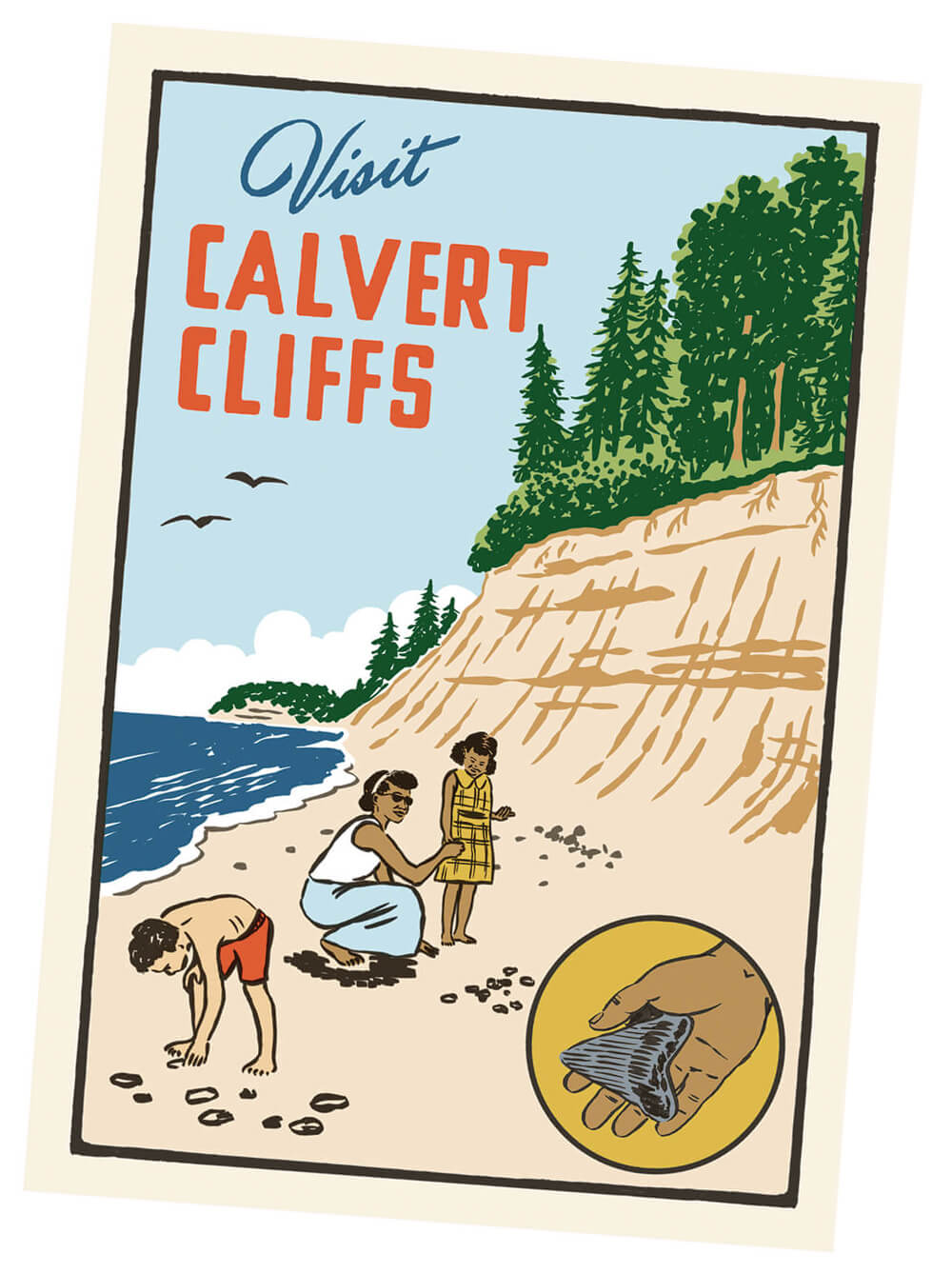
POINT LOOKOUT STATE PARK
The southern tip of St. Mary’s County is home to gorgeous Chesapeake Bay views and an incredible amount of Maryland and American history. The peninsula here was formed by the confluence of the Bay and the Potomac River and first witnessed by Europeans when Captain John Smith explored it in 1612. Later, British ships raided the Southern Maryland peninsula during the Revolutionary War and the War of 1812. Point Lookout State Park itself was once an early resort for the well-to-do and then a Union prisoner- of-war camp for captured Confederate soldiers.
Peaceful paddle: In terms of outdoor recreation, there are three paddling trails at the state park—Point Lookout Creek, Lake Conoy, and a route along the edge of the Chesapeake Bay. Canoe rentals are available from the park store on a first-come basis. The park boasts a nature center, fishing pier, beach, and the Point Lookout Lighthouse as well.
Go for: paddling, fishing, camping, and history.
Don’t miss: The Civil War Museum and still-remaining earth works of a Civil War fortification on the Potomac River shore near Cornfield Harbor.

LOCAL TREASURES
Ghost Fleet of Mallows Bay
Wilson Landing Rd., Nanjemoy
Declared a National Marine Sanctuary nearly two years ago, Mallows Bay is home to what has been described as the “largest shipwreck fleet in the Western Hemisphere.” Mallows Bay Park is the primary access point to the somewhat spooky ship sanctuary and surrounding marine habitat. Local amenities include a boat ramp, soft launch for kayaks—guided tours are available—a walking trail, and interpretive signs.
ST. MARY’S CITY
The first expedition from England to the planned Maryland colony, undertaken by Cecil Calvert, the 2nd Baron Baltimore, consisted of two ships—the Ark and Dove—with roughly 150 settlers, Jesuit missionaries, and indentured servants aboard. They arrived in what is now St. Mary’s County in 1634 and made permanent settlement upon a bluff overlooking the St. Mary’s River. The land had been home to the Piscataway people, who allowed the British settlement, and initially the settlers and Native Americans coincided peacefully. For the next six decades, St. Mary’s City served as the capital of the new colony.
Living history: Since 1969, St. Mary’s has been recognized as a National Historic Landmark. The city’s landmarks and living history museum commemorate North America’s fourth permanent English settlement.
Go for: the history, farmers’ market, and Chesapeake Bay.
Don’t miss: The Maryland Dove, the full-size replica of the early 17th-century expedition ship to the then-colony, which was constructed for the state’s 350th anniversary in the mid-1970s.
SOLOMONS ISLAND
Inhabited since colonial time, Solomons Island gets its name from Isaac Solomon, a 19th-century Baltimore businessman who established a cannery here after the Civil War. His house still stands on the entrance to the island. Shipyards eventually developed to support the island’s watermen and fishing fleet. Schooners and sloops were constructed here, as well as the more famous bugeyes, forerunners of Maryland’s iconic skipjacks. The deep harbor has remained a hub for watermen and boaters ever since.
Art for art’s sake: The Annmarie Sculpture Garden & Arts Center in Solomons is an award-winning arts nonprofit and features a Smithsonian-affiliated, forested sculpture garden. The sculpture garden and one-quarter-mile walking path hosts permanent works and pieces on loan from the Smithsonian Institution and the National Gallery of Art.
Go for: hiking, birding, and kayaking.
Don’t miss: “On Watch,” Antonio Tobias Mendez’s sculpture commemorating the World War II U.S. Naval Amphibious Training Base.


CAPTAIN AVERY MUSEUM
1418 E. West Shady Side Rd., Shady Side
The southern Anne Arundel County museum features three centuries of Chesapeake Bay history. The quiet town, beaches, and restaurants in Shady Side are worth a trip.
THE COMMEMORATIVE TO ENSLAVED PEOPLES OF SOUTHERN MARYLAND
47777 Mattapany Rd., Lexington
The haunting “ghost frame” architecture of a replica slave quarters offers visitors a place for reflection on the nature of slavery and linkages to today’s society.
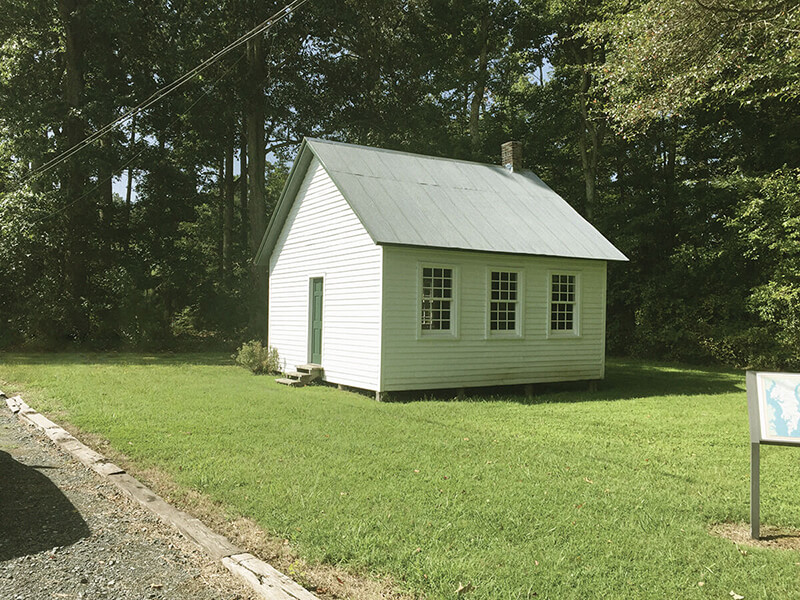
DRAYDEN AFRICAN-AMERICAN SCHOOLHOUSE
18287 Cherryfield Rd., Drayden
The one-room schoolhouse, one of the best preserved African-American schoolhouses in the country, was built around 1890 and remained in use until 1944. COURTESY OF ST. MARY'S COUNTY MUSEUM DIVISION

MARYLAND INTERNATIONAL RACEWAY
27861 Budds Creek Rd., Mechanicsville
This drag strip in St. Mary’s County has a capacity of 12,500 fans and hosts weekend races of all stripes, as well as car and truck shows. RACE CAR: CSA Images
FORT FOOTE RODMAN GUNS
Fort Washington
The 15-inch diameter, Civil War-era cannons weigh in at nearly 50,000 pounds, and required 300 to 400 Union soldiers to move them up from the nearby river bluff to the fort. The balls fired by the massive guns weighed more than 500 pounds.
PATUXENT RESEARCH REFUGE
10901 Scarlet Tanager Loop, Laurel
The National Wildlife Visitor Center here is the largest center for environmental science operated by the U.S. Department of the Interior.
SOUTHERN MARYLAND BLUE CRABS
11765 St. Linus Dr., Waldorf
Minor league baseball is one of the summer’s great pastimes, and the independent Blue Crabs play in the Atlantic League of Professional Baseball.
ST. CLEMENT’S ISLAND
St. Mary’s County
Uninhabited St. Clement’s Island State Park features a 40-foot stone cross commemorating the beginnings of religious freedom in the country. It also is home to a reconstruction of the historic Blackistone Island lighthouse, which was a target of a Confederate raid.
SURRATT HOUSE MUSEUM
9118 Brandywine Rd., Clinton
The farmhouse for the family of John and Mary Surratt, the 1852-built home, now museum, was one of the dramatic settings in the conspiracy behind John Wilkes Booth’s assassination of President Lincoln.
UNITED STATES COLORED TROOPS MEMORIAL MONUMENT
21550 Willows Rd., Lexington
Dedicated to African-American Union troops of St. Mary’s County, the monument specifically honors Sgt. James Harris and Pvt. William Barnes, who were each awarded the Medal of Honor. More than 600 U.S. Black troops, including freemen and slaves, from St. Mary’s joined the fight against the Confederacy.

Rediscover Baltimore’s Own History, World-class Museums, And Trails—not To Mention A Diverse Visual Arts And Music Scene That’s Second To None.
PATAPSCO VALLEY STATE PARK
The beautiful valley that surrounds the 39-mile Patapsco River was once a major mill hub, and part of the original western route created by the B&O Railroad when it was constructed in 1829. In fact, several of the old railroad bridges survive, including the arched, stone Thomas Viaduct, the largest railroad bridge in the U.S. when it was built, and the Patterson Viaduct, whose ruins remain in the park. Maryland’s first state park extends across 32 miles of the river and spans over 16,000 acres in total, including eight recreational areas and 70 miles of maintained trails. Patapsco Valley State Park is also known as one of the top mountain biking destinations on the East Coast, in particular the McKeldin and Avalon areas, with dozens of trails for riders of all abilities.
How it got started: In 1907, Catonsville’s John Glenn planted the seeds for the state park when he donated 43 acres to the Maryland Board of Forestry. In the 1930s, it became a state park and the Civilian Conservation Corps, one of FDR’s New Deal initiatives, built campgrounds, cabins, and pavilions.
Go for: hiking, mountain biking, camping, and swimming holes.
Don’t miss: the park’s two swinging bridges that cross over the Patapsco River.
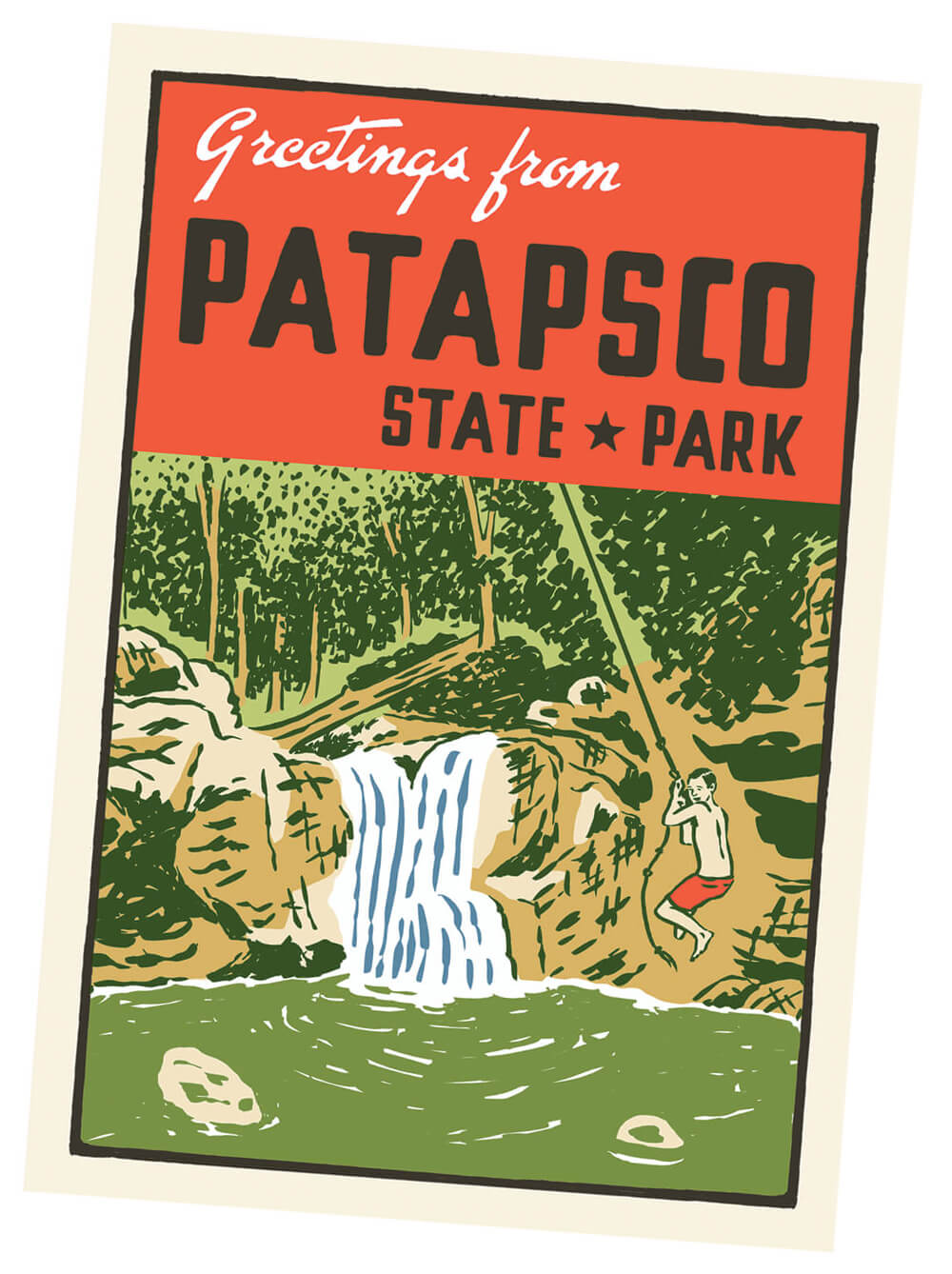
ANNAPOLIS
Sometimes we forget that one of the best small towns in America is just a 35-minute drive from Baltimore. Or, if you are up for a more vigorous trek, a 13-mile bicycle ride from Glen Burnie via the popular Baltimore & Annapolis Trail. The historic City Dock area lies at the foot of Annapolis’ Main Street, which slopes down from St. Anne’s Episcopal Church. It was founded in 1692 and is one of the original 30 Anglican parishes established in the Maryland province. At the head of City Dock sits a small park with the Kunta Kinte-Alex Haley Memorial, which commemorates the arrival point of the Roots author’s African ancestor.
Step back in time: The array of seemingly endless historical sites within walking distance of downtown Annapolis includes the entire Colonial Annapolis Historic District, Maryland State House, U.S. Naval Academy, and St. John’s College, which opened in 1789.
Go for: sailing, shops, seafood, and art galleries.
Don’t miss: the Banneker-Douglass Museum, located in the Mt. Moriah African Methodist Episcopal Church and dedicated to preserving the state’s African- American heritage.

LOCAL TREASURES
“America’s Sailing Capital”
Annapolis
Annapolis bills itself as “America’s Sailing Capital” and why not? The city has hosted the U.S. Sailboat Show, scheduled again for October, for the past five decades. Even more fun are Annapolis’ Wednesday Night Sailboat races, a long-time summer tradition, which can be watched from many places, including over cocktails.
GUNPOWDER FALLS STATE PARK
A diverse topographical corridor, Gunpowder Falls State Park stretches from Harford County to the shores of the Chesapeake Bay in Eastern Baltimore County. Established in 1959 to protect the Gunpowder River, as well as the Big and Little Gunpowder Falls, the park’s 18,000 acres range from rugged, hilly slopes to tidal marshes. It features more than 120 miles of trails, including the nearly 20-mile Torrey C. Brown Rail Trail (official name for the Northern Central Railroad walking and bicycle trail)—a local gem. The park also includes Prettyboy Reservoir, the Jerusalem Mill Village, Hammerman Area swimming beach, and Dundee Creek Marina.
What’s in a name? No one is sure, but the best guess is that it’s related to the saltpeter—a gunpowder ingredient—found along the rivers’ banks.
Go for: hiking, fishing, and horseback riding.
Don’t miss: cozy Loch Raven Fishing Center, which rents boats for fishing or paddling.
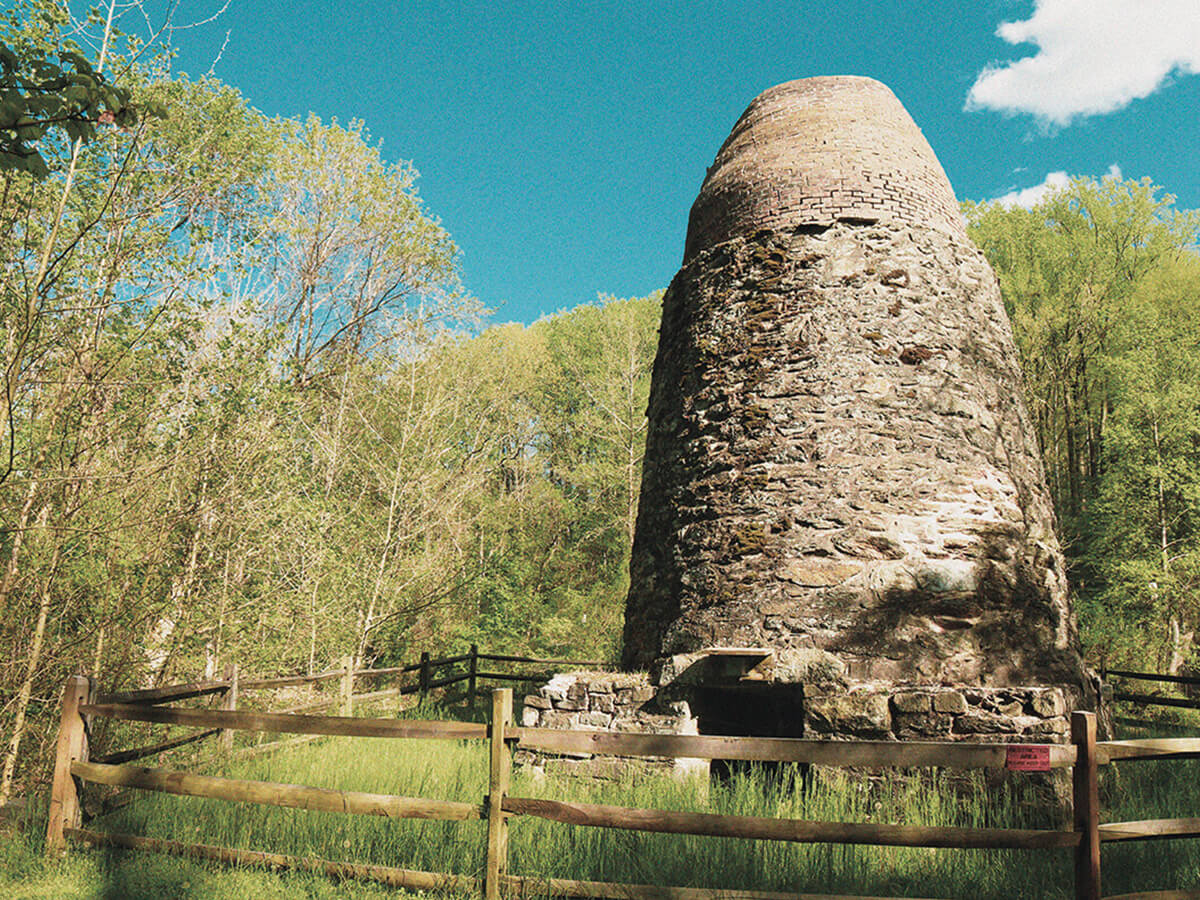
SUSQUEHANNA STATE PARK
Captain John Smith, who explored the Susquehanna River in 1608, wrote [of it]: “Heaven and earth seemed never to have agreed better to frame a place for man’s commodious and delightful habitation.” The river is named for the Susquehannock tribe, whom Smith met on his travels. For thousands of years, Native Americans thrived around the river, building farms and communities, and to this day, their petroglyph carvings survive in the river’s rocks. Situated along the Susquehanna Valley, amid its thick forest and often rocky terrain, the park offers hiking trails with river views and some excellent mountain biking opportunities.
Bring a camera: the picnic area around the Conowingo Dam offers one of the most popular places anywhere to photograph bald eagles and their high-speed fishing dives. October through February is the best time to go, but bald eagles do nest here year-round.
Go for: hiking, birding, and fishing.
Don’t miss: the restored Rock Run Historic Area.


BABE RUTH BIRTHPLACE MUSEUM
216 Emory St., Baltimore
Three blocks west of Camden Yards, the Bambino’s birthplace and childhood home tells the story of the rags-toriches life of America’s first superstar. It’s a must for any fan of the National Pastime. BASEBALL PLAYER: CSA IMAGES
BILLIE HOLIDAY HOME
217 Durham St., Baltimore
Known as “Lady Day Way,” the Upper Fells Point block where Holiday lived pays homage to the iconic jazz singer with colorful murals and works of art.
CLARK’S ELIOAK FARM
10500 Clarksville Pike, Ellicott City
The family-friendly farm and petting zoo is home to beloved recovered attractions from Route 40’s famed Enchanted Forest.
DIVINE’S GRAVESITE
701 York Rd., Towson
Peaceful Prospect Hill Cemetery is the resting place of Harris Glenn Milstead, John Waters’ collaborator and the film star also known as Divine.
ELIJAH BOND’S OUIJA BOARD GRAVE
1501 Greenmount Ave., Baltimore
Green Mount Cemetery is renowned for the prominent Baltimoreans interred here, including Elijah Bonds, who patented the Ouija board—a stone replica serves as his headstone.
KING AND QUEEN’S SEAT
3318 Rocks Chrome Hill Rd., Jarrettsville
The big attractions at Rocks State Park are Kilgore Falls and the spectacular King and Queen Seat rock formation, once the site of Native American ceremonial gatherings.
LADEW TOPIARY GARDENS
3535 Jarrettsville Pike, Monkton
Described as one of the “10 incredible topiary gardens around the world” by Architectural Digest, the 22 acres of award-winning gardens are just 30 minutes north of Baltimore.
NATIONAL GREAT BLACKS IN WAX MUSEUM
1601 E. North Ave., Baltimore
The one-of-a-kind museum is dedicated to the study and preservation of Black history.
HUBERT V. SIMMONS MUSEUM OF NEGRO LEAGUES BASEBALL
10302 Grand Central Ave., Owings Mills
Hosted inside the Owings Mills branch of the Baltimore County Public Library, the museum celebrates Negro League baseball and specifically, the great history of Baltimore’s Black Sox and Elite Giants.
UNION MILLS HOMESTEAD AND GRIST MILL
3311 Littlestown Pike, Westminster
A rural cultural and Civil War history landmark with a blacksmith shop and functioning grist mill, this year Union Mills celebrates its 50th annual Corn Roast Festival in August.

WHETHER HIKING, BIKING, CAMPING, OR WHITEWATER RAFTING, WESTERN MARYLAND’S LAKES AND MOUNTAINS ARE MADE FOR WANDERERS AND ADVENTURE SEEKERS ALIKE.
DEEP CREEK LAKE
The largest inland body of water in the state is, in fact, manmade, the result of a 1920s hydroelectric project on Garrett County’s Deep Creek. The Pennsylvania Electric Company created Deep Creek Lake by constructing a dam out of earth and rocks that stretched across a tributary of the Youghiogheny River. The state of Maryland officially purchased the lake two decades ago. Today, Deep Creek Lake State Park—a mountain resort tucked in the Alleghenies and a long way from the heat and humidity of Baltimore summers—provides access to the lake, which covers 3,900 acres and nearly 70 miles of shoreline, including two swimming beaches. The state park is also home to 20 miles of hiking and biking trails. The area hosts a variety of aquatic life and fish—from largemouth bass to northern pike and rainbow trout.
Adventurous: Try the guided whitewater rafting and kayaking while in Western Maryland for the kind of exhilarating fun that will make you think you’re in Colorado. And check Wisp ski resort for summer climbing courses, archery, mountain biking, and disc golf.
Go for: boating, swimming, and whitewater rafting.
Don’t miss: the nearby old-growth forests of Swallow Falls State Park, which hosted Henry Ford, Thomas Edison, and Harvey Firestone, who camped there together in 1921.
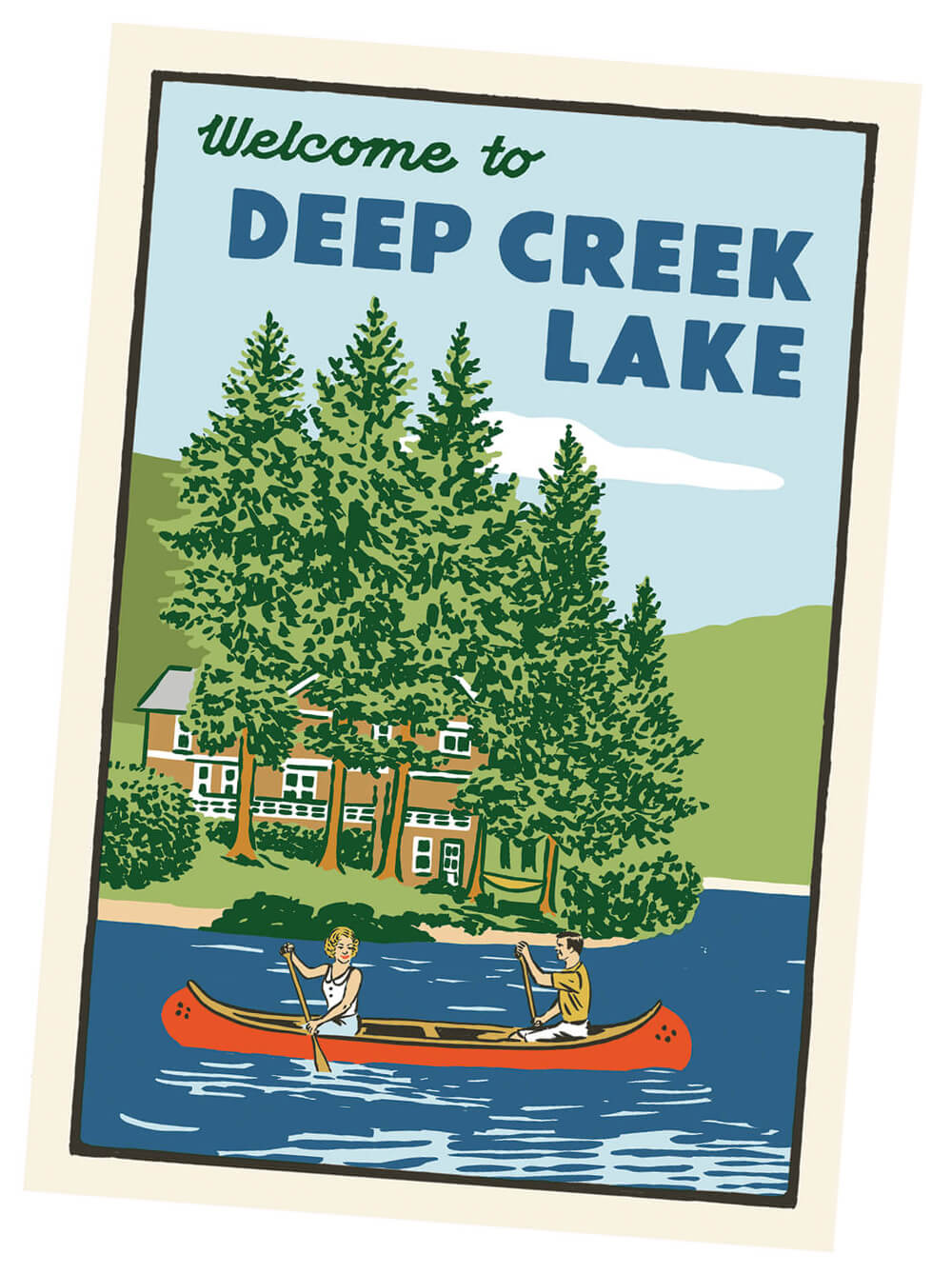
APPALACHIAN TRAIL
The Appalachian Mountains stretch from Georgia to Canada and through Maryland, offering some of the most scenic vistas in the state. Encompassing 41 manageable miles from the West Virginia line to the Pennsylvania border, the Maryland section of the Appalachian Trail includes the gentlest terrain on America’s iconic hiking trail. It also cuts through Boonsboro’s Washington Monument State Park—home to the first U.S. monument to our first president— and Gathland State Park, which includes the National War Correspondents Memorial Arch, the first war correspondents monument in the United States. There are lots of places to access the trail, at Pen Mar Park, for example, on the PA line, and along the C&O Canal Towpath near the Potomac River.
Formative years: The Appalachian peaks were created some 270 million years ago when the ancestral continents of North America and Africa collided, thrusting masses of rocks that had been on the ocean floor upward and west—to what is today the eastern United States.
Go for: hiking and camping.
Don’t miss: the Appalachian Trail Conservancy in nearby Harpers Ferry.

LOCAL TREASURES
Delfest
Allegany County Fairgrounds, Cumberland
Fourteen years ago, York, Pennsylvania-born bluegrass pioneer Del McCoury brought his band and some friends together to do some playing in the heart of the Maryland mountains. Today, the annual multiday DelFest—music and camping set against a stunning Appalachian backdrop in Cumberland— is a must for bluegrass fans.
GREAT ALLEGHENY PASSAGE
From its start in Cumberland, the Great Allegheny Passage heads through Frostburg to the Mason- Dixon line and the Eastern Continental Divide. There is historical drama along the way, too, including the Cumberland Bone Cave—an archeological site containing bones of saber-toothed cats and other extinct species—and the 914-foot Brush Tunnel. You might also catch a glimpse of the working steam railroad that still operates between Cumberland and Frostburg. Ultimately, the Great Allegheny Passage, completed in 2013, runs 150 miles to Pittsburgh. The route follows former rail beds and traverses alongside rivers and streams amid landmarks from the French and Indian Wars and the Midwestern expansion.
Hall of Famer: The GAP was the first rail-trail in the country to be inducted into Rails-to-Trails Conservancy’s Hall of Fame.
Go for: bicycling, camping, and scenic views.
Don’t miss: the Allegany Museum, whose exhibits center on the region’s prehistoric life, local folk art, and Cumberland’s industrial history. A Crossroads of America exhibition, which will trace the history of human movement through the area, is in the works.
ROCKY GAP STATE PARK
This Allegany County state park originated in large part from a donation of land by Edward Habeeb, a local florist and turn-of-the-century Lebanese immigrant. His donation, along with those of some 40 other local landowners, led to the construction of a dam built by the Army Corps of Engineers in 1970 and the formation of the 243-acre Lake Habeeb. Officially opened in 1974, the day-use area of the 3,000-plus acre state park is situated on the former Clover Hill dairy farm. The Rocky Gap Casino Resort here is privately owned and operated.
Blue is the warmest color: Rocky Gap Run, which winds its way through a mile-long gorge of cliffs and dense hemlock forest, feeds Lake Habeeb, which is known for having the bluest water in the state. Evitts Mountain, named for one of the first European settlers in the area, overlooks the lake.
Go for: Mountain biking, hiking, and boating.
Can’t miss: The Rocky Gap State Park Aviary.


ANTIETAM NATIONAL BATTLEFIELD
5831 Dunker Church Rd., Sharpsburg
Seventy-two miles west of Baltimore is the site of the 12-hour Battle of Antietam, where some 23,000 Union and Confederate soldiers were killed, wounded, or lost on September 17, 1862. The epic Civil War bloodbath ended Gen. Robert E. Lee’s first foray into the North and prompted President Lincoln to pen his preliminary Emancipation Proclamation.
CRYSTAL GROTTOES CAVERNS
19821 Shepherdstown Pike, Boonsboro
The only “show cave” in Maryland, these Washington County caverns were discovered in 1920 and opened to the public two years later. Good news: The passages are generally high, if narrow. Also: bring a jacket for the 30-35 minute tour, the temperature remains in the 50s all year round.
CRANSVILLE SWAMP PRESERVE
Lake Ford Rd., Garrett County
The unique swamp—one of the coolest and wettest places in the state—is similar in landscape to the habitat in northern Canada’s bo-real forests due to its “frost pocket.” There are five trails here, including a quartermile boardwalk.
EMMANUEL EPISCOPAL CHURCH
16 Washington St., Cumberland
The tunnels under the 1850-built Emmanuel Parish Church were the last Underground Railway stop in slave territory for African Americans headed north past the Mason-Dixon line.
FORT FREDERICK STATE PARK
11100 Fort Frederick Rd., Big Pool
The large, restored stone Fort Frederick served as an active frontier fortification during the French and Indian War and prisoner-of-war camp during the American Revolutionary War.
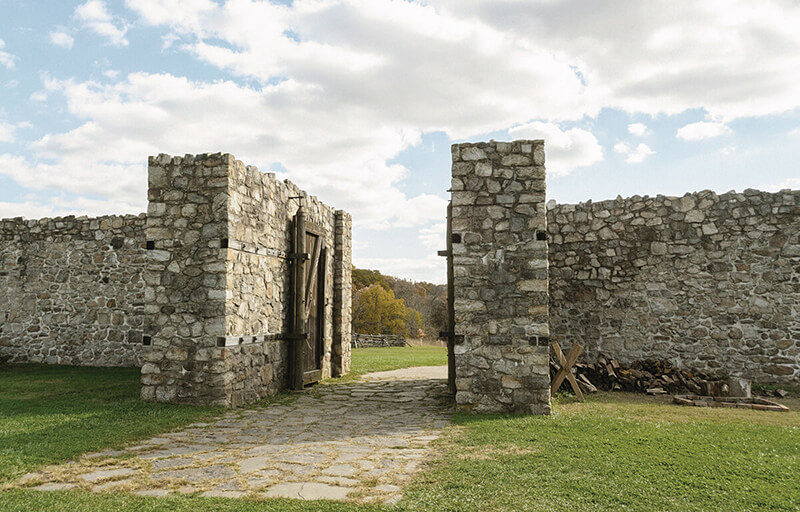
LEFTY GROVE MEMORIAL PARK
2 Union St., Lonaconing
The statue and mini baseball diamond here honor the Hall of Fame pitcher from Western Maryland.
LOVER’S LEAP
Wills Mountain, Cumberland
According to lore, a white hunter and the daughter of a Native American chief jumped to their deaths after her father refused to approve their marriage.
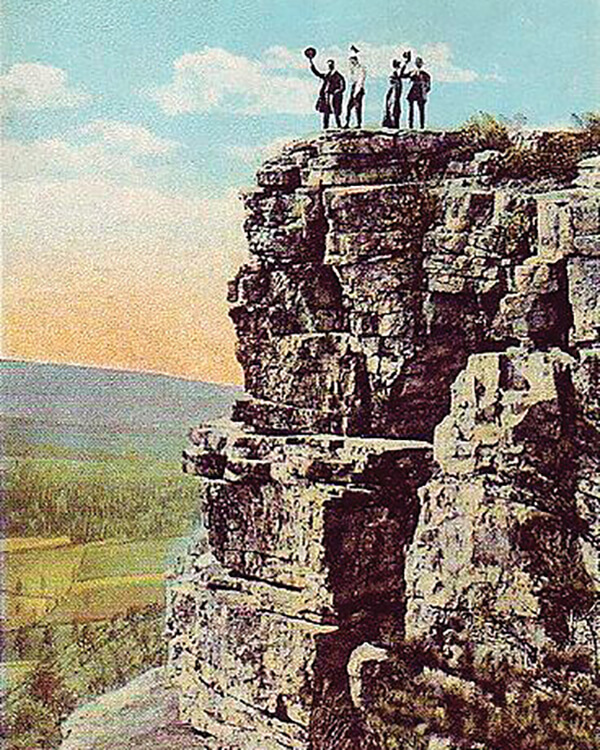
HOYE-CREST SUMMIT
Backbone Mountain, Garrett County
Maryland’s highest point is named for Capt. Charles E. Hoye, founder of the Garrett County Historical Society, and at an elevation of 3,360 feet is a remarkable, accessible hike from Route 219.
PAW PAW TUNNEL
Oldtown
One of the most notable landmarks on the C&O Canal Towpath, the Paw Paw Tunnel—named after the Maryland fruit—has a colorful history, including fistfights between boatsmen who sometimes refused to yield the right-of-way. It’s also said to be haunted.
WASHINGTON COUNTY MUSEUM OF FINE ARTS
401 Museum Dr., Hagerstown
Situated in City Park, this is one of the most remarkable and comprehensive smalltown art museums in the country. By itself, it’s worth a trip to Washington County from Baltimore.
